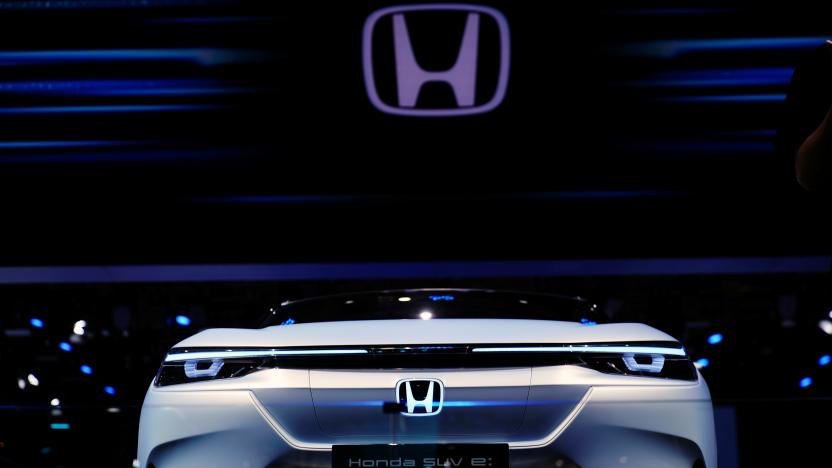fuel cell vehicles
Latest

Honda aims to shift car sales entirely to EVs by 2040
The automaker also revealed plans for an EV platform called e:Architecture.

Toyota reportedly working on a hydrogen-fueled Lexus limo
Toyota's first hydrogen car hasn't even gone on sale yet here in the US, and already we're hearing rumors about a follow-up vehicle. According to the Australian website Motoring, the Japanese auto giant is planning on taking the same fuel cell system it used in its mid-range Mirai sedan, and putting it into a higher-end Lexus LS limousine. For the most part, then, the new vehicle will make use of the same technology, though Toyota will apparently have to do some retro-fitting in order to make it work inside the current Lexus LS. (Unlike the LS, the Mirai was built from scratch as a hydrogen car.) If Motoring's report is correct, the new Lexus will have a fuel cell under the front seat, with the hydrogen tanks located behind the rear seat. Also, despite the fact that the LS wasn't originally designed as a hydrogen vehicle, it will reportedly offer nearly the same range as Toyota's existing FCEV: 239 miles, versus 300 on the Mirai. No word yet on price or whether this report is even true. And we suspect it could be a while before anyone sets the record straight -- the hydrogen-fueled Lexus LS is rumored to launch "by 2017," up to two years from now.

Fuel cells get stronger, potentially cheaper with graphene, ITO
As the sustainable Juggernaut of fuel cell vehicles (FCV) powers ever forward, a group of scientists are cooking up ways to make the alternative energy source more durable and even cheaper. By combining graphene -- think pencil lead -- and indium tin oxide (ITO) nanoparticles, the team produced a catalytic material that is both stronger and more chemically active than the usual catalytic combo. Fuel cells typically use a chemical catalyst like platinum, sitting atop a base of black carbon or metal oxides, to break down oxygen and hydrogen gases, creating water in the process -- thing is, carbon is easily eroded by the resulting water, and metal oxides, while more stable, are less conductive. Using graphene -- which because of its porousness erodes less quickly -- in combination with the stable ITO and platinum nanoparticles, researchers have created what could be referred to as a super fuel cell -- a stronger, longer lasting, and potentially cheaper version of the alternative energy source. Unfortunately, without enough hydrogen filling stations, these super fuel cells won't come to anyone's rescue anytime soon.

Hyundai brings hydrogen vehicles to Europe, one free fleet at a time
Excited for the rise of hydrogen economies, but can't wait till 2015? If you work for the Norwegian, Swedish, Danish or Icelandic governments, you might get to see the future personally. Hyundai's signed a memorandum of understanding with the aforementioned four countries to deliver a test fleet of fuel cell electric vehicles, and the Nikkei Shimbun is reporting that the company will personally foot the (possibly quite reasonable) bill. Free hydrogen-powered SUV? Don't mind if we do!

FTA awards $16.6 million in grants for fuel cell bus research
While we were jealously hung up on South Korea's working electric bus system, Christmas apparently came early for a couple of lucky US fuel cell bus research projects -- in the form of $16.6 million in Federal Transit Administration grants. Pasadena based Calstart snagged almost $10.2 million and will funnel 70 percent of the funds to developing the first phase of a low-cost, longer lasting fuel cell power system. Calstart will then spend its remaining $2.9 million in partnership with the Chicago Regional Transit Authority to develop and test the viability of fuel cell bus fleets in cold climates. The Center for Transportation and the Environment in Atlanta was the other project to hit the federal money gravy train. It received a hefty $6.4 million to spread across six different projects that dabble in everything from developing fast-charging 35-foot fuel cell buses, to similar lithium ion versions, to improving existing hybrid bus platforms. Federal pork for fuel cell DSLR development regrettably missed the cut. For the full scoop hit up the press release after the break.


